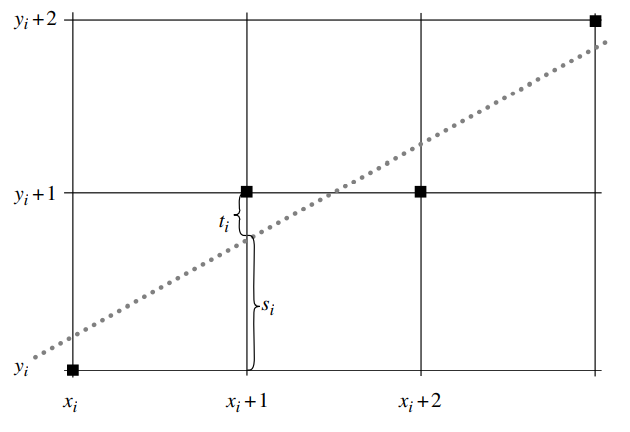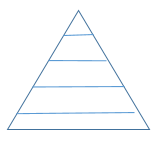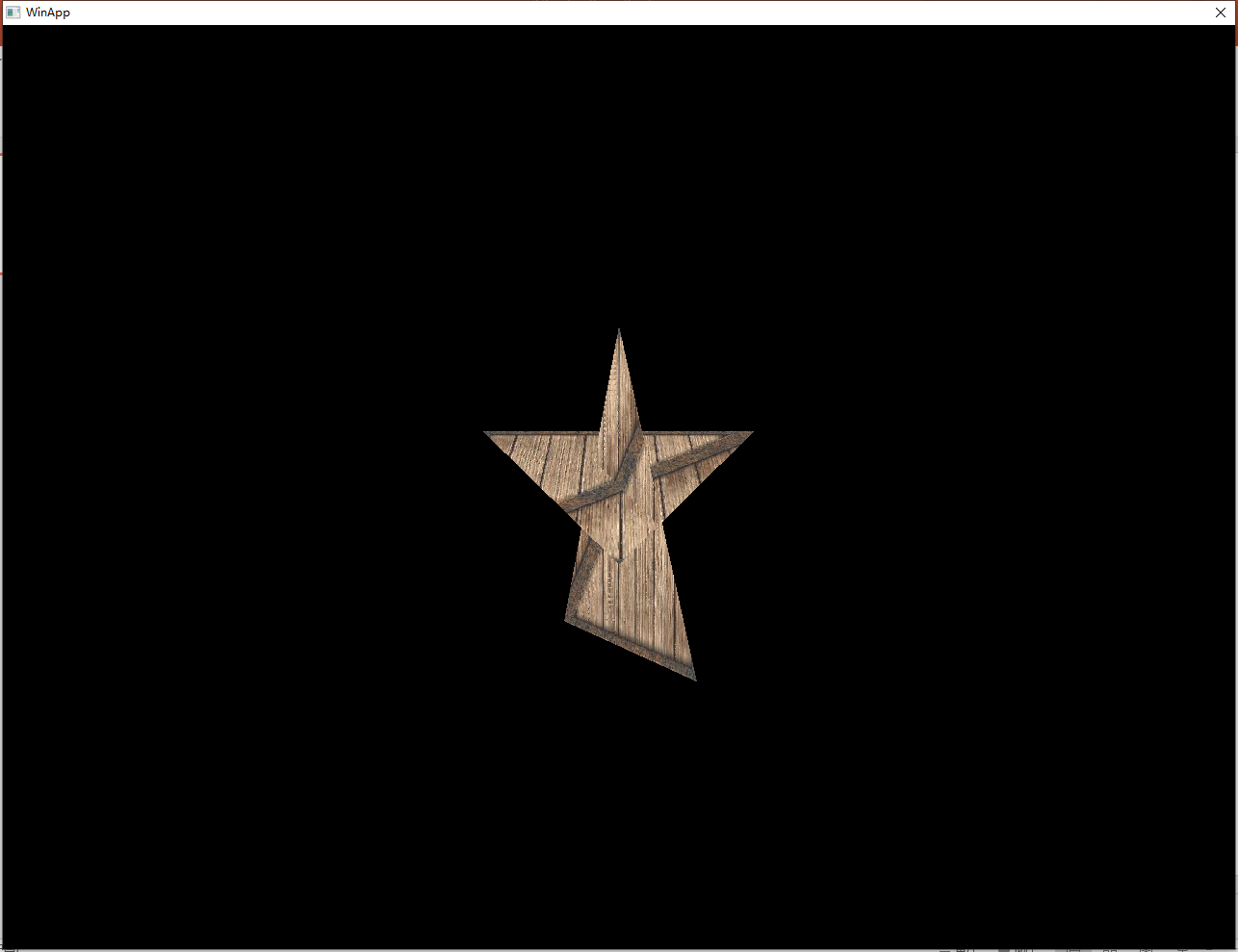从零开始游戏开发——3.3 光栅化
在第2.5节中,通过光线追踪的方式渲染了一个三角形,但由于速度太慢而不能直接用于实时渲染。主流方式通过光栅化的方式将图元显示到屏幕上。
在Windows上,屏幕空间坐标以左上角为(0,0)点,x轴正方向朝右,y轴正方向朝下。首先我们想要在屏幕上绘制一条线段,比较著名的时Bresenham绘直线算法,下图表达了当斜率小于1时,线段下一像素的位置。

在这里定义:
1 void CRasterizer::DrawLine(int x0, int y0, int x1, int y1, const Color &c /* = Color(1, 0, 0, 0)*/) 2 { 3 // start point of the line 4 int x = x0; 5 int y = y0; 6 7 // direction of line 8 int dx = x1 - x0; 9 int dy = y1 - y0; 10 11 // Increment or decrement on direction of line 12 int sx = 0; 13 int sy = 0; 14 if (dx > 0) 15 { 16 sx = 1; 17 } 18 else if (dx < 0) 19 { 20 sx = -1; 21 dx = -dx; 22 } 23 24 if (dy > 0) 25 { 26 sy = 1; 27 } 28 else if (dy < 0) 29 { 30 sy = -1; 31 dy = -dy; 32 } 33 34 int ax = 2 * dx; 35 int ay = 2 * dy; 36 37 if (dy <= dx) 38 { 39 // single step in x-direction 40 for (int decy = ay - dx; x += sx; decy += ay) 41 { 42 DrawPixel(x, y, c); 43 if (x == x1) 44 { 45 break; 46 } 47 if (decy >= 0) 48 { 49 decy -= ax; 50 y += sy; 51 } 52 } 53 } 54 else 55 { 56 // single step in y-direction 57 for (int decx = ax - dy; y += sy; decx += ax) 58 { 59 DrawPixel(x, y, c); 60 if (y == y1) 61 { 62 break; 63 } 64 if (decx >= 0) 65 { 66 decx -= ay; 67 x += sx; 68 } 69 } 70 } 71
三角形的绘制通常采用扫描线算法,即从上到下依次进行水平扫描线方向进行光栅化操作,光栅化一个三角形,首先要计算的三角形边上扫描线的起点和终点,这个些位置则可以通过上面的Bresenham算法计算获取。因为三角形是带有顶点属性的,

过程需要对顶点属于进行插值计算,前面章节讲到,顶点属性在屏幕空间除以z值是线性插值的,因此这里还需要进行透视校正的计算。根据三角形的位置,需要有以下四种情况进行处理,分别为上三形、下三角形、左三角形、右三角形。

1 void CRasterizer::DrawTriangle(Vector4f p[3], Vector3f n[3], Color c[3], Vector2f t[3]) 2 { 3 int i0 = 0; 4 int i1 = 1; 5 int i2 = 2; 6 //三角形退化为线 7 if ((FLOAT_EQUAL(p[i0].y, p[i1].y) && FLOAT_EQUAL(p[i0].y, p[i2].y)) || 8 (FLOAT_EQUAL(p[i0].x, p[i1].x) && FLOAT_EQUAL(p[i0].x, p[i2].x))) 9 return; 10 11 //按y从小到大排序 12 if (p[i1].y < p[i0].y) 13 { 14 Utils::Swap(i0, i1); 15 } 16 17 if (p[i2].y < p[i1].y) 18 { 19 Utils::Swap(i2, i1); 20 } 21 22 if (p[i1].y < p[i0].y) 23 { 24 Utils::Swap(i0, i1); 25 } 26 27 if (FLOAT_EQUAL(p[i0].y, p[i1].y))//bottom triangle 28 { 29 if (p[i1].x < p[i0].x) 30 { 31 DrawEdgeBuffer(i1, i2, p, n, c, t, _pMinEdgeBuffer); 32 DrawEdgeBuffer(i0, i2, p, n, c, t, _pMaxEdgeBuffer); 33 } 34 else 35 { 36 DrawEdgeBuffer(i0, i2, p, n, c, t, _pMinEdgeBuffer); 37 DrawEdgeBuffer(i1, i2, p, n, c, t, _pMaxEdgeBuffer); 38 } 39 } 40 else if (FLOAT_EQUAL(p[i1].y, p[i2].y)) //top triangle 41 { 42 if (p[i1].x < p[i2].x) 43 { 44 DrawEdgeBuffer(i1, i0, p, n, c, t, _pMinEdgeBuffer); 45 DrawEdgeBuffer(i2, i0, p, n, c, t, _pMaxEdgeBuffer); 46 } 47 else 48 { 49 DrawEdgeBuffer(i0, i2, p, n, c, t, _pMinEdgeBuffer); 50 DrawEdgeBuffer(i0, i1, p, n, c, t, _pMaxEdgeBuffer); 51 } 52 } 53 else 54 { 55 //p1点在扫描线位置与p0p2的交点x 56 float newX = p[i0].x + (p[i2].x - p[i0].x) * (p[i1].y - p[i0].y) / (p[i2].y - p[i0].y); 57 58 if (p[i1].x < newX) 59 { 60 DrawEdgeBuffer(i0, i1, p, n, c, t, _pMinEdgeBuffer); 61 DrawEdgeBuffer(i1, i2, p, n, c, t, _pMinEdgeBuffer); 62 DrawEdgeBuffer(i0, i2, p, n, c, t, _pMaxEdgeBuffer); 63 } 64 else 65 { 66 DrawEdgeBuffer(i0, i2, p, n, c, t, _pMinEdgeBuffer); 67 DrawEdgeBuffer(i0, i1, p, n, c, t, _pMaxEdgeBuffer); 68 DrawEdgeBuffer(i1, i2, p, n, c, t, _pMaxEdgeBuffer); 69 } 70 } 71 72 73 int yMin = MAX((int)p[i0].y, 0); 74 int yMax = MIN((int)p[i2].y, _bufferHeight - 1); 75 for (int y = yMin; y <= yMax; ++y) 76 { 77 EdgeBuffer &minEdge = _pMinEdgeBuffer[y]; 78 EdgeBuffer &maxEdge = _pMaxEdgeBuffer[y]; 79 80 unsigned int offset = (unsigned int)(MAX(minEdge.X, 0) + (y - 1) * _bufferWidth); 81 unsigned int *addr = (unsigned int *)_pDrawBuffer + offset; 82 if (_pDepthBuffer) 83 { 84 float *zbuffer = _pDepthBuffer + offset; 85 if (_pSamplers) 86 { 87 FillColor(addr, zbuffer, minEdge, maxEdge); 88 } 89 else 90 { 91 FillColor(addr, zbuffer, minEdge, maxEdge); 92 } 93 } 94 else 95 { 96 FillColor(addr, nullptr, minEdge, maxEdge); 97 } 98 } 99 }
上述代码是光栅化三角形的入口代码,首先对三个顶点进行y值从小到大的排序,然后区分三角形的几种情况记录边的数据,最后从最小到最大的执行扫描线算法。DrawEdgeBuffer函数如下,利用顶点中的w值(储存了世界坐标的z)进行透视校正并计算边的顶点属性。
1 void CRasterizer::DrawEdgeBuffer(int i0, int i1, Vector4f p[3], Vector3f n[3], Color c[3], Vector2f t[3], EdgeBuffer *edgeBuffer) 2 { 3 int x0 = p[i0].x; 4 int x1 = p[i1].x; 5 int y0 = p[i0].y; 6 int y1 = p[i1].y; 7 float invz0 = p[i0].z; 8 float invz1 = p[i1].z; 9 float invw0 = 1.f / p[i0].w; 10 float invw1 = 1.f / p[i1].w; 11 12 // start point of the line 13 int x = x0; 14 int y = y0; 15 16 // direction of line 17 int dx = x1 - x0; 18 int dy = y1 - y0; 19 20 // Increment or decrement on direction of line 21 int sx = 0; 22 int sy = 0; 23 if (dx > 0) 24 { 25 sx = 1; 26 } 27 else if (dx < 0) 28 { 29 sx = -1; 30 dx = -dx; 31 } 32 33 if (dy > 0) 34 { 35 sy = 1; 36 } 37 else if (dy < 0) 38 { 39 sy = -1; 40 dy = -dy; 41 } 42 43 int ax = 2 * dx; 44 int ay = 2 * dy; 45 46 47 float dx01 = (p[i1].x - p[i0].x) / (p[i1].y - p[i0].y); 48 float rate = sqrt(1 + dx01 * dx01); 49 50 float invDis = Utils::InvSqrt(dx * dx + dy * dy); 51 float invdz = (invz1 - invz0) * invDis * rate; 52 float invdw = (invw1 - invw0) * invDis * rate; 53 float decz = invz0; 54 float decw = invw0; 55 56 Vector3f dn; 57 Vector3f decn; 58 Vector2f dt; 59 Vector2f dect; 60 Color dc; 61 Color decc; 62 63 if (n) 64 { 65 dn = (n[i1] * invw1 - n[i0] * invw0) * invDis * rate; 66 decn = n[i0] * invw0; 67 } 68 if (t) 69 { 70 dt.x = (t[i1].x * invw1 - t[i0].x * invw0) / dx; 71 dt.y = (t[i1].y * invw1 - t[i0].y * invw0) / dy; 72 dect = t[i0] * invw0; 73 } 74 75 if (c) 76 { 77 dc = (c[i1] * invw1 - c[i0] * invw0) * invDis * rate; 78 decc = c[i0] * invw0; 79 } 80 81 if (dy <= dx) 82 { 83 // single step in x-direction 84 for (int decy = ay - dx; ;x += sx, decy += ay) 85 { 86 edgeBuffer[y].X = x; 87 if (n) 88 { 89 edgeBuffer[y].Normal = decn; 90 } 91 92 if (t) 93 { 94 edgeBuffer[y].TexCoords = dect; 95 } 96 97 if (c) 98 { 99 edgeBuffer[y].Color = decc; 100 } 101 102 edgeBuffer[y].InvZ = decz; 103 edgeBuffer[y].InvW = decw; 104 105 if (x == x1) 106 { 107 break; 108 } 109 110 if (decy >= 0) 111 { 112 if (n) 113 { 114 decn = decn + dn; 115 } 116 117 if (t) 118 { 119 dect.x += dt.x; 120 dect.y += dt.y; 121 } 122 123 if (c) 124 { 125 decc = decc + dc; 126 } 127 128 decz += invdz; 129 decw += invdw; 130 131 decy -= ax; 132 y += sy; 133 } 134 else 135 { 136 if (t) 137 { 138 dect.x += dt.x; 139 } 140 } 141 } 142 } 143 else 144 { 145 // single step in y-direction 146 for (int decx = ax - dy; ;y += sy, decx += ax) 147 { 148 edgeBuffer[y].X = x; 149 150 if (n) 151 { 152 edgeBuffer[y].Normal = decn; 153 } 154 155 if (t) 156 { 157 edgeBuffer[y].TexCoords = dect; 158 } 159 160 if (c) 161 { 162 edgeBuffer[y].Color = decc; 163 } 164 165 edgeBuffer[y].InvZ = decz; 166 edgeBuffer[y].InvW = decw; 167 168 if (y == y1) 169 { 170 break; 171 } 172 173 if (n) 174 { 175 decn = decn + dn; 176 } 177 178 if (t) 179 { 180 dect.y += dt.y; 181 } 182 183 if (c) 184 { 185 decc = decc + dc; 186 } 187 188 decz += invdz; 189 decw += invdw; 190 191 if (decx >= 0) 192 { 193 decx -= ay; 194 x += sx; 195 if (t) 196 { 197 dect.x += dt.x; 198 } 199 } 200 } 201 } 202 }
最后利用FillColor填充扫描线颜色时,同样要进行透视校正,当计算出当前像素处的顶点属性插值后,将其传入给FragmentShader处理程序:
void CRasterizer::FillColor(unsigned int *addr, float *zbuffer, const EdgeBuffer &minEdge, const EdgeBuffer &maxEdge) { int count = maxEdge.X - minEdge.X; if (count < 0) count = -count; int x = minEdge.X; float invcount = 1.f / count; float dz = (maxEdge.InvZ - minEdge.InvZ) * invcount; float invz = minEdge.InvZ; float dw = (maxEdge.InvW - minEdge.InvW) * invcount; float invw = minEdge.InvW; Color dc = (maxEdge.Color - minEdge.Color) * invcount; Color c = minEdge.Color; Vector2f dt = (maxEdge.TexCoords - minEdge.TexCoords) * invcount; Vector2f t = minEdge.TexCoords; float realz; for (int i = 0; i < count; ++i) { if ((x >= 0) && (invz < *zbuffer) && (invz >= -1 && invz <= 1)) { realz = 1.f / invw; // color + uv static float datas[4 + 2]; Color &color = *((Color *)datas); color.a = c.a * realz; color.r = c.r * realz; color.g = c.g * realz; color.b = c.b * realz; Vector2f &texCoord = *(Vector2f *)(&color + 1); texCoord.x = t.x * realz; texCoord.y = t.y * realz; // fragment shader auto result = _OnFProgram(_pGlobalUniforms, _pUniforms, _pSamplers, datas); *addr = result.Get32BitColor(); *zbuffer = invz; } x += 1; if (x >= _bufferWidth) break; invz += dz; invw += dw; c.a += dc.a; c.r += dc.r; c.g += dc.g; c.b += dc.b; t.x = t.x + dt.x; t.y = t.y + dt.y; if (x >= 0) { ++zbuffer; ++addr; } } }
下图为光栅化后的两个三角形效果,光栅化三角形时,也可以采用不记录边的方式,将左、右三角形分割为上三角形和下角形,再执行扫描线算法,这种方式省去了储存边的空间,具体代码也上传至了Github上。

本文来自博客园,作者:毅安,转载请注明原文链接:https://www.cnblogs.com/primarycode/p/16611725.html,文章内容同步更新微信公众号:“游戏开发实战”或“GamePrimaryCode”






【推荐】国内首个AI IDE,深度理解中文开发场景,立即下载体验Trae
【推荐】编程新体验,更懂你的AI,立即体验豆包MarsCode编程助手
【推荐】抖音旗下AI助手豆包,你的智能百科全书,全免费不限次数
【推荐】轻量又高性能的 SSH 工具 IShell:AI 加持,快人一步
· 被坑几百块钱后,我竟然真的恢复了删除的微信聊天记录!
· 没有Manus邀请码?试试免邀请码的MGX或者开源的OpenManus吧
· 【自荐】一款简洁、开源的在线白板工具 Drawnix
· 园子的第一款AI主题卫衣上架——"HELLO! HOW CAN I ASSIST YOU TODAY
· Docker 太简单,K8s 太复杂?w7panel 让容器管理更轻松!